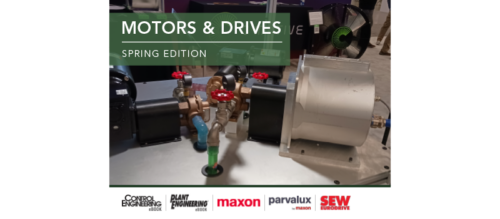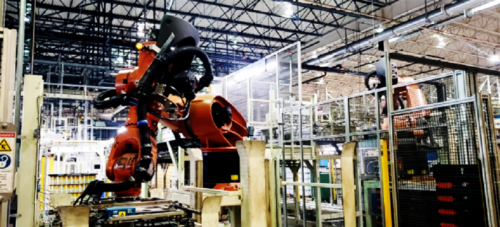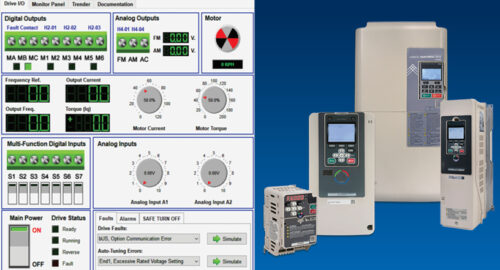Variable Frequency Drive Cuts Compressed Air Costs
Compressed air is a vital utility for most industrial businesses. It runs essential tools and machinery, and provides power to material handling systems and clean air to processes. New technology, concerns about steady pressure, maintenance, and that traditional nemesis, electrical power, make choosing the right compressor difficult.
Compressed air is a vital utility for most industrial businesses. It runs essential tools and machinery, and provides power to material handling systems and clean air to processes. New technology, concerns about steady pressure, maintenance, and that traditional nemesis, electrical power, make choosing the right compressor difficult. Surprisingly, compressed air costs are most often considered in terms of equipment. In truth, energy consumption represents up to 70% of the total cost of producing compressed air. For continuous, full-load demand, a fixed-speed rotary screw compressor may be the best solution. In cases where base load varies with an additional load, consider supporting the base load with fixed-flow compressors and adding a variable speed drive (VSD) unit to carry the load variation.
Rotary screw air compressors, with fixed-speed drives, are limited in the number of stops and starts they can make in a given time frame. In applications with variable demand, rotary screws idle for long periods to avoid overheating caused by frequent restarts. Though it does not produce compressed air while idling, a fixed-speed compressor with modulation control still consumes about 70% of full-load electrical power — a substantial electrical cost with no benefit. A fixed-speed compressor operating in dual control mode (stop/start or online/offline) uses only 25% of full-load electrical power and offers some energy savings. VSD compressors are much better able to match variable demand requirements, virtually eliminating the need for idling. Kaeser Compressors, Inc., of Fredericksburg, VA, takes VSD technology to new levels of efficiency, flexibility, and noise control with a proprietary VSD known as Sigma Frequency Control (SFC). Kaeser SFC rotary screw compressors typically save 20% — 35% of electrical costs in variable-demand applications. Some manufacturers retrofit VSDs to existing compressors. Wayne Perry, Kaeser’s Technical Director, thinks this is inadequate. “In rotary screw compressors, efficiency is based in part on airend speed. The efficiency range can be plotted on a bell curve. In an efficient range there is a flat top to the bell curve, but when you get out on the edge it falls off very rapidly. As you go too slow or too fast, you use more electricity and produce less air. If you just add a VSD onto an existing compressor design, you don’t know whether that compressor design is in the middle of the bell curve or on the edge of the bell curve. I’ve worked with some companies that have compressors that are right out there on the edge of the bell curve, and if you slow them down at all they become very inefficient. Plus, in a retrofit scenario, the existing motor may not be designed to handle the conversion from fixed speed to variable speed.” (See Fig.1) One danger in retrofitting with a VSD is harmonics backing into the plant electrical system, which may disrupt or even destroy other equipment. A completely integrated system, such as Kaeser’s, isolates or eliminates all feedback so that no harmonic distortion goes into the plant’s electrical grid.
Kaeser’s design calls for a low-speed operating range — 450 rpm — 1,800 rpm. “This is where we produce optimum specific performance. To go slower would really not make sense because we lose efficiency. To go faster makes no sense because then you would have to have a larger drive,” Perry explains.
An inherent advantage of VSD is the ability to start and stop as often as desired. Unlike fixed drives, VSD systems “soft start” and incur the lowest required inrush current. Whereas a 100-hp fixed drive is limited to two or three starts and stops per hour because required inrush current heats up the motor windings, the VSD has no limit. Power companies may penalize users for even one high-inrush spike on the demand chart.
SFC drive systems stabilize plant air pressure, thereby enhancing plant quality. “We have a customer who manufactures a precision automotive driveline system. The company was assembling finished products using pneumatic torque wrenches attached to a fixed-drive air system. Because of changing available air pressures, the torque values of the wrenches were fluctuating so much that it affected proper sealing,” recalls Perry, who continues, “until they changed to a SFC system, they were forced to re-route their finished products back through a separate line to re-torque them.”
Perry adds that fixed-drive rotary screw compressors have a 10—15 psig swing built into the controls. “When you put in a VSD compressor, you have only a 1—2 psig swing, which alone can make a substantial difference in product quality.” Some VSD-equipped compressors fail to keep the power factor near unity. “Normally, when you unload an electric motor, the power factor gets worse and worse. The power company may penalize you for that. Based on how far off unity (1.0) the power factor is 0.8 or 0.7 — you get a power factor correction penalty every month on your electric bill. With our SFC we can maintain a power factor close to 1.0 throughout the entire speed range, so even as you unload you don’t have this power factor going down, and you don’t get penalized by the power company,” Perry says. For more information, please contact Wayne Perry, Technical director for Kaeser Compressors, Inc. at 540-898-5500.
Do you have experience and expertise with the topics mentioned in this content? You should consider contributing to our CFE Media editorial team and getting the recognition you and your company deserve. Click here to start this process.





